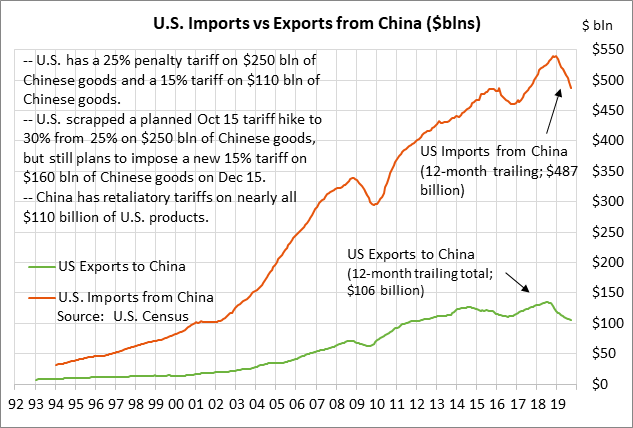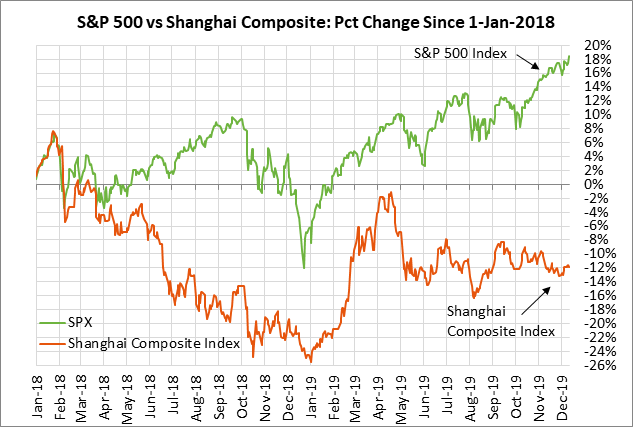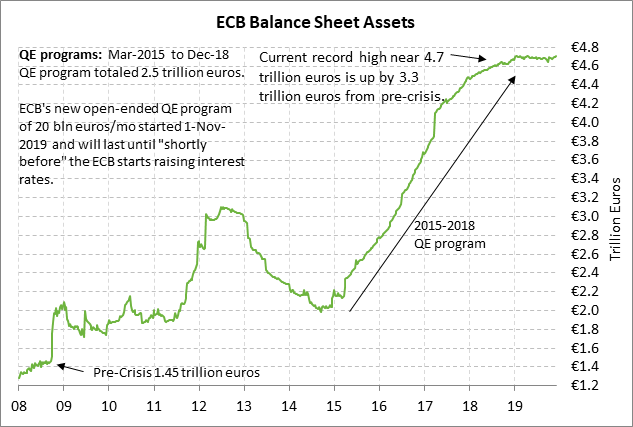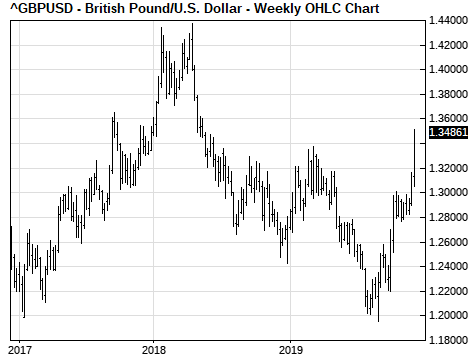- Worst of the US/China trade war may be overÂ
- Christine Lagarde brings a little optimism
- Brexit is now imminent and sterling soars on exit polls
- Congressional leaders say they have a spending deal for the remainder of the fiscal year
Worst of the US/China trade war may be over — There were various media reports late Thursday afternoon that President Trump at his mid-afternoon meeting with advisors signed off on the US/China phase-one trade deal. However, the administration as of Thursday evening had yet to officially announce the agreement or provide any details.
The markets are being a bit cautious about the reports of an agreement until President Trump officially announces the deal himself and assures his full support. Also, there is still room for some problems in the coming days since the text of the deal has not yet been written, according to media reports. That means that there is still the possibility of a serious misunderstanding about the exact terms of the deal, a problem that has plagued previous deals.
The Wall Street Journal Thursday morning reported that the U.S. negotiators have offered China the cancellation of the Dec 15 tariff and a reduction of as much as 50% of the existing tariffs. Existing tariffs include the 25% tariff on $250 billion of Chinese goods and the 15% tariff on $110 billion of Chinese goods.
The markets will be very pleased if the phase-one trade deal involves a 50% reduction of existing U.S. tariffs since that would suggest that the global trade situation should start to improve significantly as supply chains are rebuilt and as business confidence and investment recovers.
If a phase-one trade deal is finalized, market attention will quickly shift to the next phase of US/Chinese trade relations. The Trump administration has left the difficult issues such as technology transfers and subsidies to stage-two negotiations. President Trump has some leverage to engage in phase-two negotiations since he can offer to remove the rest of the existing tariffs as part of a phase-two deal. However, Mr. Trump presumably will have only a limited ability to threaten new tariffs in phase-two trade negotiations next year since new tariffs could be construed as reneging on the phase-one deal.
It is entirely possible that the Trump administration will leave serious phase-two trade negotiations to what they hope will be a second term. The advantage of cleaving off a phase-one deal is that it insulates the Trump administration from criticism that China only needed to give limited concessions in order to get a trade deal. The Trump administration can respond to that criticism by saying that they will get the tough concessions from China in the phase-two deal. For the markets, however, there is hope that the worst of the US/Chinese trade war might be over.


Christine Lagarde brings a little optimism — Christine Lagarde, in her debut performance as the new ECB President, gave a bit of a pep talk in her opening statement by saying that there are “some initial signs of stabilization in the growth slowdown” and that the risks are “tilted to the downside, but have become somewhat less pronounced.”
Ms. Lagarde gave no reason to think there will be any change in monetary policy over the medium term. The ECB on Thursday met unanimous market expectations by leaving intact its -0.50% deposit rate and its QE program of 20 billion euros/month that began on Nov 1. There was no change Thursday in the market’s projection of about a 30% probability of an interest rate cut by the end of 2020.
Ms. Lagarde announced that the ECB’s first strategy review since 2003 will begin in January and should be completed by the end of 2020. That review could produce a revision of the ECB’s inflation target and perhaps its approach to negative interest rates and QE.
Ms. Lagarde ended her appearance by saying “voila,” which could be taken to mean, “there you are, you have a new ECB President.”

Brexit is now imminent and sterling soars on exit polls — A smooth Brexit is now virtually assured for January, thus eliminating market fears of a no-deal, assuming the exit polls are correct and that the Conservatives won a big majority in Thursday’s general election. Prime Minister Johnson should be able to easily push his Brexit withdrawal plan through the new Parliament before the Brexit deadline of January 31.
The exit polls suggest that the Conservatives won a huge majority of 86 seats, which would be the largest majority since the days of Margaret Thatcher. Labour is projected to see a disastrous loss of 71 seats from the last election, sparking talk that Labour leader Corbyn may be forced to resign.
Sterling soared by +2.2% Thursday evening when the exit poll results were released. The markets are hopeful that the no-deal Brexit morass is over and that the UK can now enter a smooth transition period through the end of 2020 during which a UK-EU trade deal will be negotiated. There is still the possibility of a no-deal Brexit at the end of 2020 if there is no trade deal and Prime Minister Johnson refuses an extension. However, the coast is now clear for at least the first half of 2020.

Congressional leaders say they have a spending deal for the remainder of the fiscal year — Congressional budget negotiators Thursday afternoon announced that they reached a deal on all 12 spending bills to fund the government for the remainder of the fiscal year, i.e., through September 2020. The White House was involved in the negotiations, although it was not immediately clear whether President Trump will get enough of his wall funding to convince him to sign the spending bills. The House is expected to take up the spending bills this coming Tuesday, and then forward the bills to the Senate for approval before the current continuing resolution expires next Friday.

